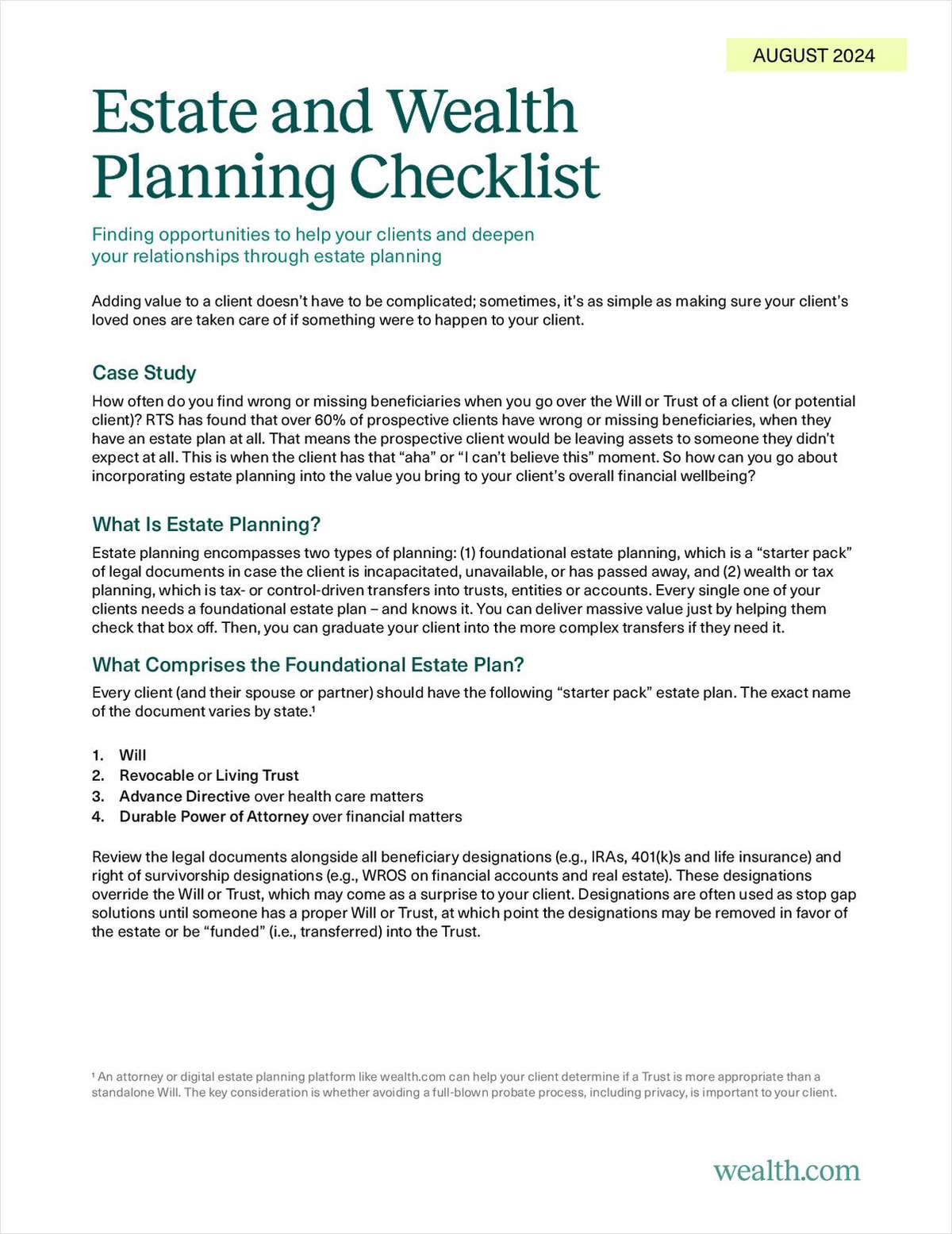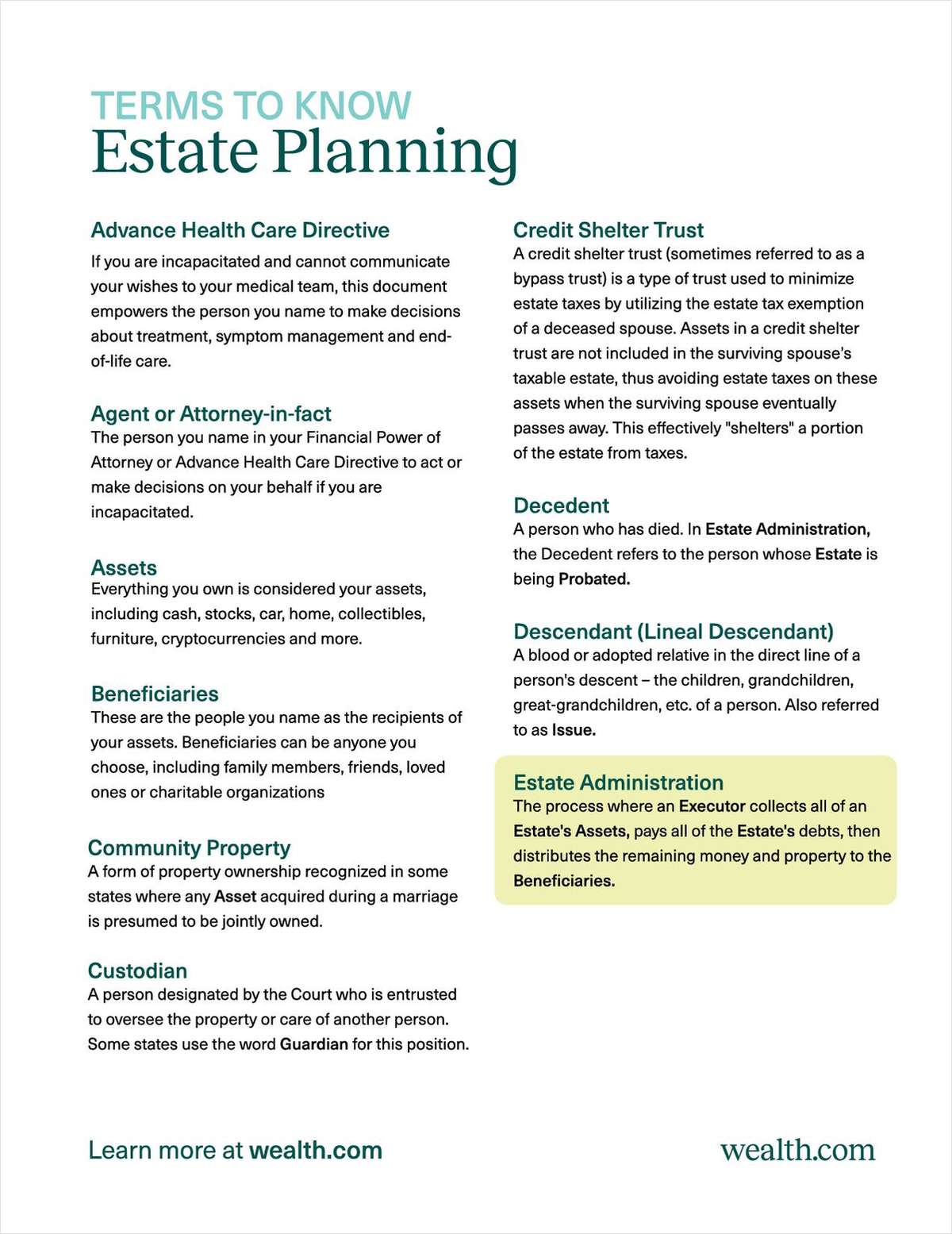One the things I love most about covering financial planning is the CFP Board. They may be the worst thing to happen to the planning profession since limited partnerships, but I pray that planners continue to keep them around, for the entertainment value alone. I had begun to despair that with the appointment of Sarah Teslik as CEO, the Board had entered a new era of boring professionalism. Then, suddenly, my spirit was buoyed to new heights as those wacky folks in Denver unleashed a staggering one-two combination–Sarah Teslik going off the wall on Nightline and then the baffling proposed revisions to the Board's code of ethics.
In case you missed Teslik's Nightline gig, or the subsequent flurry of e-mailing by CFPs in reaction thereto, here's the skinny. She was asked to testify before the Senate Banking Committee on financial literacy. Her message was that financial literacy just isn't working: people are bombarded by financial information, yet studies show that 70% of Americans spend more than they make, as the personal-debt-to-income ratio has doubled in the past 10 years.
In her remarks she might have suggested the logical next step: Because people often respond better to personal interaction rather than data dumps, perhaps we need to find a way to hook up professional financial planners with more people who need their help. She even used parallels between debt on the one hand and physical conditioning, diet, and alcoholism on the other. Yet she never drew the obvious conclusion that in those cases, people tend to be far more successful with interaction from the equivalent of a financial planner: an AA sponsor, a nutritionist, or a personal trainer.
Instead, her testimony on May 23 took a bizarre twist: "All around us a revolution in science is occurring that can help translate the excellent financial literacy and financial planning work that has already occurred into better results….The implications of behavioral finance and neuro-economics go much farther and some of the design suggestions they make, however unnerving they may at first seem, are exciting."
Yes, you read that right: "…however unnerving…" Then, possibly for my personal entertainment, Teslik made the leap from science to science fiction: "There are chemical problems, biological problems that lead us to be consumers today… Medication's a possibility. Another…one is gambling. Gambling works. People love gambling… We could have people contribute to their pension plans, to retirement plans…And all of it gets divvied up into the pension funds, except for $100 million, which someone wins as a lottery at the end of the year."
You got it: America's personal debt problem is caused by chemical imbalances that could be corrected by drugs or gambling. You just can't make this stuff up. To be fair, there are some academic studies that are beginning to point in these directions. But do we want the CEO of the CFP Board suggesting what one can only call radical theories, such as these as solutions, to the U.S. Senate? Or to the public on national TV? As a fledgling profession struggling for credibility, this association with the lunatic fringe combined with the lost opportunity to suggest competent financial planning as the real solution has to be considered one of the industry's all-time PR disasters–right up there with the dog that Forbes successfully enrolled as a member of the IAF back in the day.
About Those Ethics . . .
Hard as it is to believe, Teslik's testimony was only the setup jab in the CFP Board's recent knock-out flurry. The haymaker came in the proposed ethics revisions that were released at the end of July.
There are some good things to be said about the new standards. For instance, they are shorter than the old version. The new version also eliminates the two-tier standards of the older version: one for all CFPs, and one for CFPs who identify their services as "financial planning."
One might rightly ask why a certified financial planner would need special standards if they hold themselves out to be a "financial planner?" I told you, these guys are a jaded journalist's dream. The best I can tell from various answers I've received over the years is that some CFPs, such as academics, don't practice financial planning and therefore shouldn't be treated the same as CFPs who do. It's also been suggested to me that CFPs whose employers don't allow them to offer planning should have a lower standard.
Call me cynical, but I have to wonder whether folks who get to use "CFP" on their business cards but aren't held to "financial planning" standards have at least the potential for deceptive marketing. At the risk of taking some of the fun out of the Board, here's a suggestion: Rather than write standards for all possible variations of CFP certificants, and then higher ones for practicing financial planners, wouldn't we be better off rightly assuming that the vast majority of CFPs are practicing planners, and writing the standards appropriate for them?



